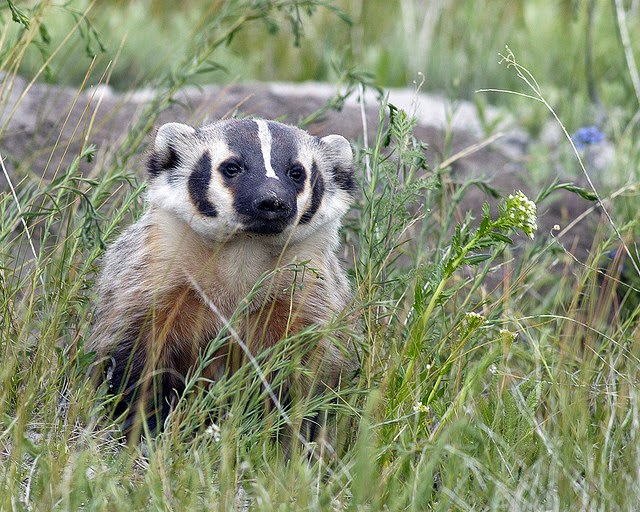A species at risk can include any plant, animal, insect or
fish that is either endangered, threatened, extirpated, extinct or under
special concern. However this list includes strictly mammals that are not
extirpated or extinct. It is important to know where to find some of the Ontario
species at risk to ensure you are respectful of their unique habitat as well as
to take the opportunity while you can to see the animal up close or just the
way it lives.
1. American Badger:
With less than 200 known in Ontario, the American Badger can
be found in the Southwestern part of the province, close to Lake Erie and areas
of Thunder Bay. (Mauro, B. 2014)
2. Cougar:
More specifically the eastern population, the Cougar is a species
at risk that prefers to wait for the perfect moment to capture their prey. They
are found in Eastern Ontario and there have been sightings in Quebec and Nova
Scotia. (Fast, Eleanor 2015)
3. Grey Fox:
This species is considered threatened tells us that if the
right steps are not taken in the near future this animal could be endangered. There
have been a few Grey Foxes witnessed in the Niagara and Windsor regions however
they mostly reside on Pelee Island in west Lake Erie. (Mauro, B. 2014)
4. Wolverine
No, this animal doesn’t have eighth inch claws coming out of
its hands; however they do have some vicious teeth. The Wolverine can be found
along northwest border of Manitoba and Ontario as well as large patches north of
Kenora on the southwest side (Mauro, B. 2014)
https://www.flickr.com/photos/ontarionature/6344486893/in/photolist-aED9V4-9oZSHC-3DFP57-88Mpxz-88MpiF-9gQeNx-9gTm8d-otMUyq-g982df-cskP1m-6pHnDx-8ffTuZ-ocpjUL-88QN8o-88MyBv-88Mppe-88Mpsn-826PBW-826Pyw-hAX7ks-ow9xMM
5. Woodland Caribou:
The threatened species of the Boreal Region relies heavily on
the forest ecosystem to maintain life. It is due to the demand of lumber that
species such as the Caribou are becoming at risk and it will continue to happen
as long as Canada decides to do so. Recently in British Columbia the provincial
government has been killing wolves at a rapid pace in order to keep the Caribou
from being preyed upon. Although one may assume this saves Caribou, truthfully
it only makes the wolves more stressed and willing to kill since they are no
longer in their regular pack.
6. Beluga Whale:
This mammal is under the classification of endangered and
does not have OMNR status which stands for the Ontario Ministry of Natural
Resources and Forestry. It is located across Canada all throughout the
territories but specifically in Ontario in the eastern Hudson’s Bay area.
Mothers frequent shallow waters in the summer because the temperature of the
water is very similar to that of the land. (Aquatic Species at Risk 2010)
7. Eastern Mole
“Widespread and common in eastern and central North America,
the range of the Eastern Mole is restricted to the extreme southwestern part of
Ontario. It was never common in the province.” (Mauro, B. 2014)
8. Woodland Vole
Scientific name being Microtis pinetorum, the Woodland Vole “is
known to exist at 30 sites from the Municipality of Chatham-Kent and Lambton
County, east to Haldimand County, and north to Halton Regional Municipality and
the City of Hamilton. Because it spends most of its time below ground, this
species is difficult to spot and may have been missed at other locations in the
province.” (Mauro, B. 2014)
9. Eastern Wolf
“There are probably fewer than 500 Eastern Wolf in Canada, with most living in central Ontario and western Quebec, and with the highest population densities found in Algonquin Provincial Park.” (Mauro, B. 2014)
10. Polar Bear
“Female polar bears give birth to one or two
cubs, rarely three, each weighing a little over half a kilogram. Cubs are
nursed inside the den for two to three months until they weigh about 10 to 12
kilograms. At that time, the mother leads her family back to the sea ice so she
can resume hunting.” (Mauro, B. (2014)
How does it make you feel to see these wonderful
creatures struggle as they’re endangered species in Ontario?










So much interesting information! I am following you everywhere!
ReplyDelete